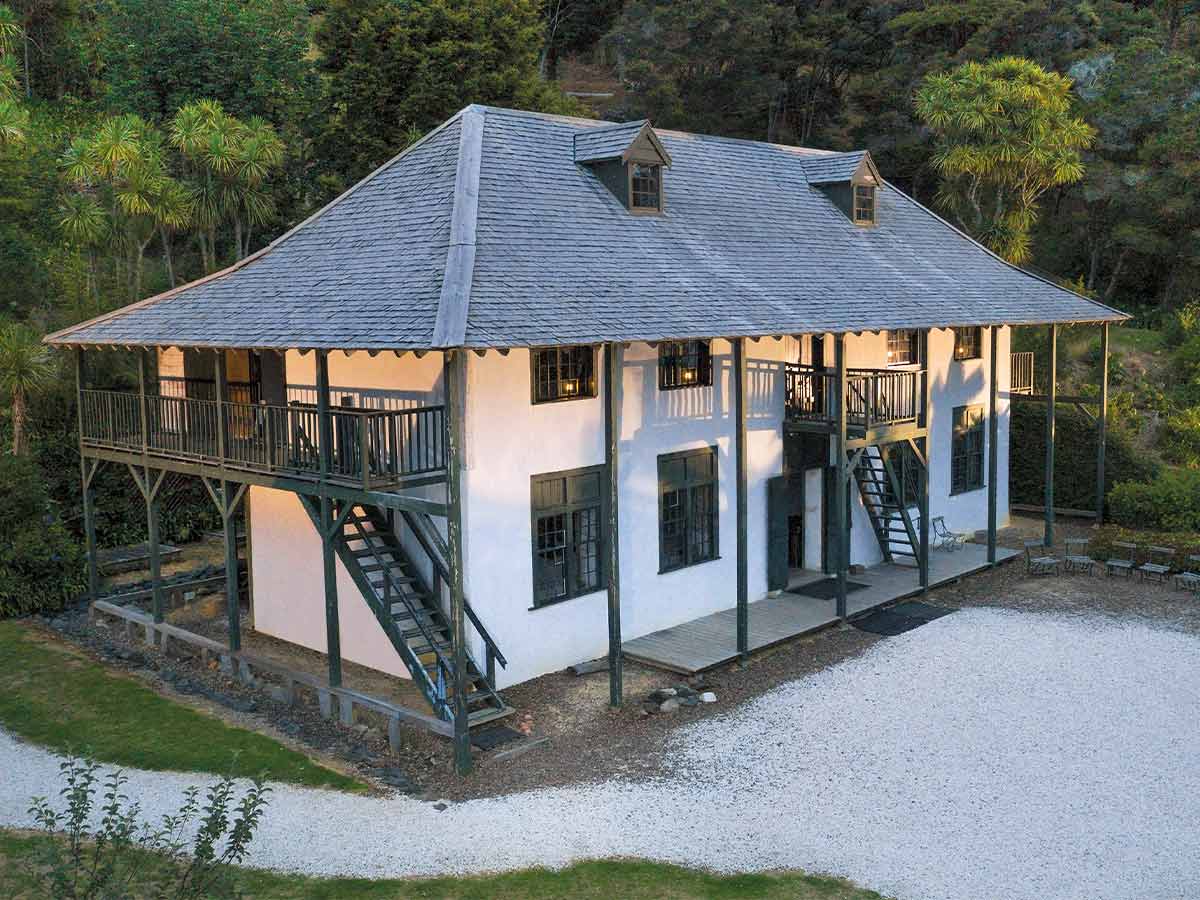Tripping around the Far North, the magnificent beaches that scallop the coastline lost some of their appeal when the temperatures suddenly turned south, so rather than heading for home, Jill Malcolm decided to follow a theme, setting out to visit the surviving mission stations that give so much context to the Far North
As well as the missions themselves, hundreds of tiny churches are dotted all over the countryside as testimony to missionary zeal. By 1845, three major denominations – Anglican, Wesleyan, and Catholic – had religious footholds in New Zealand and were battling for converts.
Pompallier Catholic Mission
We began our quest in Russell. If you visit this historically fascinating cluster of buildings pressed against the shore of Kororareka Bay and don’t visit two of its religious buildings, you haven’t been to Russell. One is Christ Church and the other is Pompallier House. The building of the minuscule Christ Church was instigated by Rev Henry Williams in 1835, in an attempt no doubt to bring the riotous community to heel. Among the old graves, we found headstones for Hannah King Lethbridge, the first white woman born in New Zealand (1816) and Tāmati Wāka Nene, the powerful chief who fought for the British in the Kororareka War when the church was clobbered by musket and cannon balls. Some bullet holes still remain in the walls.
Some seven years after the church made its debut, Pompallier House was built of rammed earth as the headquarters of the French Roman Catholic Mission. It’s named for Jean-Baptiste Pompallier, the first vicar.
It was a print house, with a tannery that produced the leather to cover the 40,000 religious Māori texts printed there. It’s definitely worth taking a tour of the house, the printing house, the tannery, and the immaculate Edwardian gardens. In one of the mission’s front rooms, the aptly named French Café serves delicious croissants, baguettes, and pastries.
Kerikeri Mission
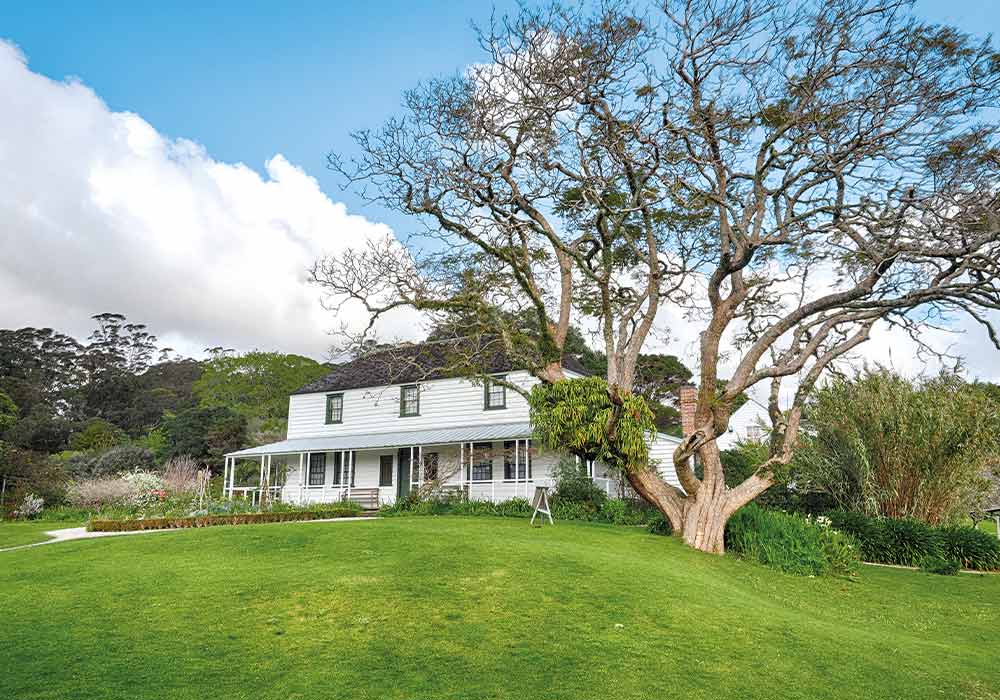
Leaving Russell, it’s an easy ferry ride from Okiato Bay to Opua, followed by a drive to one of the north’s liveliest towns. Kerikeri’s top attraction is the mission station site, where two of the country’s oldest buildings sturdily stand as the bastions of Kerikeri’s history. The early missionaries knew how to pick a good site. Kemp House, the oldest documented European dwelling in New Zealand (1822), is perched on the bank of the Kerikeri River surrounded by lawns and gardens, some of which were developed by the first inhabitants, the Anglican Reverend John Butler and family. The next family to move in were the Kemps.
The adjacent, much-photographed Stone Store was built 10 years later and since the mission folded in 1848, has had many uses. I poked around the Stone Store tourist shop and paid to look through the museum upstairs. There are tours through Kemp House for those who like digging into past lives. Instead, we had coffee and sponge cake in the pretty cottage café on the mission site known as the Honey House Café. This had evolved from a simple, shingled-roofed shed where New Zealand’s earliest honey supply was produced by a man called William ‘Bee’ Cotton.
Marsden Cross
Well before John Butler arrived in the Bay of Islands, whalers and sealers had turned the tiny town of Russell into a man-made hell. But on Christmas Day, 1814, news of heaven came sailing into Rangihoua Bay on the nearby Purerua Peninsula when the missionary, Reverend Samuel Marsden, was rowed ashore. There, in what must have been an extraordinary scene, he conducted Zealand’s first Christian service. The congregation comprised the ship’s crew, visiting chiefs, and the powerful Chief Ruatara from the local pa, flanked by his villagers. They arranged the seating on upended canoes. From a makeshift pulpit covered in black cloth, Marsden invoked the glory of God. It’s said he saw the hoisted English flag as a “signal for the dawn of civilisation, liberty, and religion in that dark and benighted land.” Two months later, he bought land at Rangihoua to establish the first New Zealand mission station.
Today, the area is a Rangihoua Heritage Park. A walk starts at Oihi Road car park at an elegant shelter, of rammed earth, which has a roof that emulates the wings of a hawk (kahu). We followed the pathway winding down through farmland and marvelling at the views of the peninsula’s convoluted coastline. Marked by interpretive panels and the stories of the early inhabitants, the track leads to the pa and mission sites and the tall, concrete Celtic cross that stands close to the spot where the service was held. Feeling the weight of history, we stood in the newly mown grass of this small, deserted cove looking out over the corrugated sea. A stream gurgled its way to the beach, and from somewhere up on the hill, tui called. The arrival of the missionaries in New Zealand was a mixed blessing but this has always been a place of peace.
Waimate North Mission
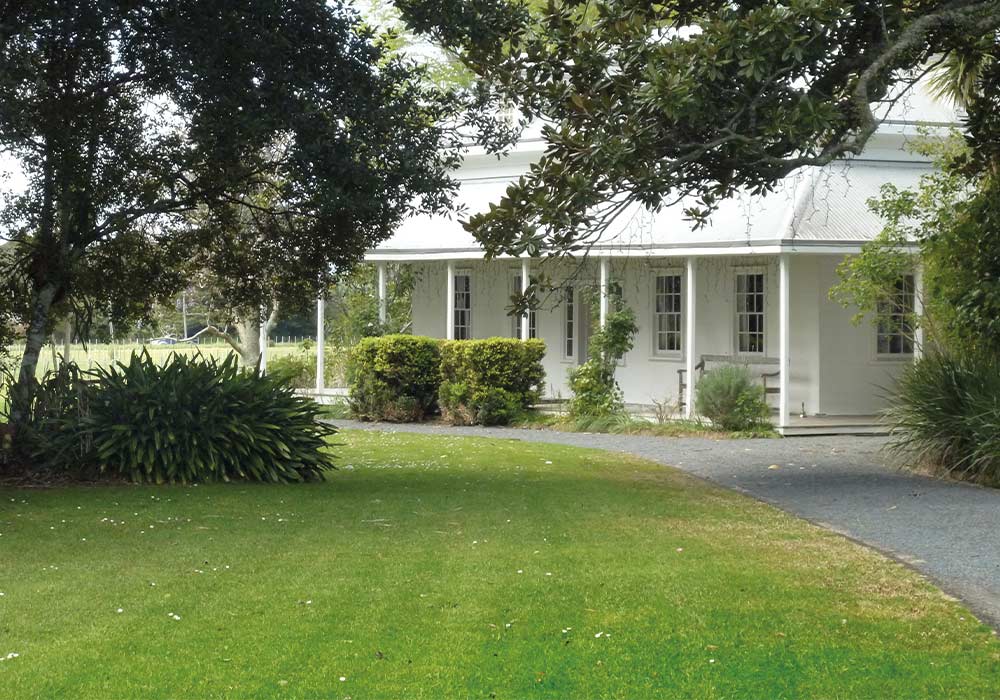
at the Waimate North Mission
Many people ignore the Anglican Waimate North Mission near the village of Ōhaeawai in the Bay of Islands and yet it’s one of the most interesting. It was established in 1830, at the request of Reverend Marsden and by invitation from Ngāpuhi chiefs. On the gate of the little Gothic church, I found a plaque that pompously announced: “In memory of Rev Samuel Marsden and the early missionaries who were the pioneers of Christianity and civilisation to the native race of this land.” Three Georgian mission houses, a church, and a school were built and the one house that remains is carefully primped and filled with missionary memorabilia and period furniture.
A cheerful young Māori man was our guide. “There’s not much left of the English-style farm they set up to teach farming practices,” he says. “My forebears weren’t all that impressed. We had plenty of farming practices of our own.”
But the set-up pleased Charles Darwin who visited the mission in 1835. Although he didn’t think much of the rest of New Zealand, this place was to his liking: “An English farm of well-dressed fields placed there as if by an enchanter’s wand,” he wrote.
Leaving the mission house and its lavish gardens, I moseyed through the adjacent churchyard – one of the oldest in the country – which, among other historical headstones, displays wooden plaques for two soldiers killed at the battle of Ōhaeawai in 1845. Waimate North Mission is open daily from 10am to 4pm.
Māngungu Mission
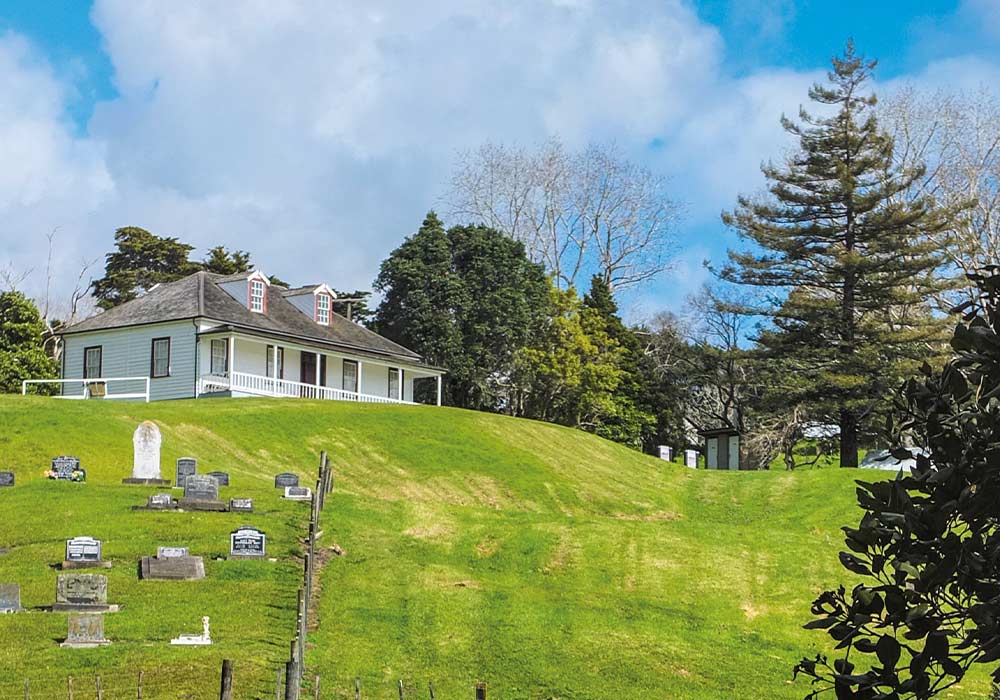
We stayed the night beside the wharf at the minuscule settlement of Horeke on the Hokianga Harbour, adjacent to the oldest hotel in New Zealand. These days, as the end point of the Twin Coast Cycle Way from Opua, the hotel only provides accommodation. The owner, Peter Maddren, has a formidable knowledge of the area and told me about the greatest event that had taken place at the Māngungu Mission, which is just up the road.
On 12 February 1840, Captain William Hobson was ferried past the hotel surrounded by a flotilla of waka on his way to the mission for the largest signing of The Treaty of Waitangi. It was six days after the signing at Waitangi and the governor and his entourage had walked for three days from the east coast to the upper reach of the Hokianga where they continued the journey by boat.
The next morning, we drove to the elegant Wesleyan Māngungu Mission House (1839). It was closed (be aware it’s open Saturday and Sunday only), so we didn’t see the table on which the treaty was signed by no less than 60 rangatira. The resident missionary, the Reverend John Hobbs, left in 1857, and, for some reason, took the whole house with him. It was shipped piece by piece to Onehunga, Auckland.
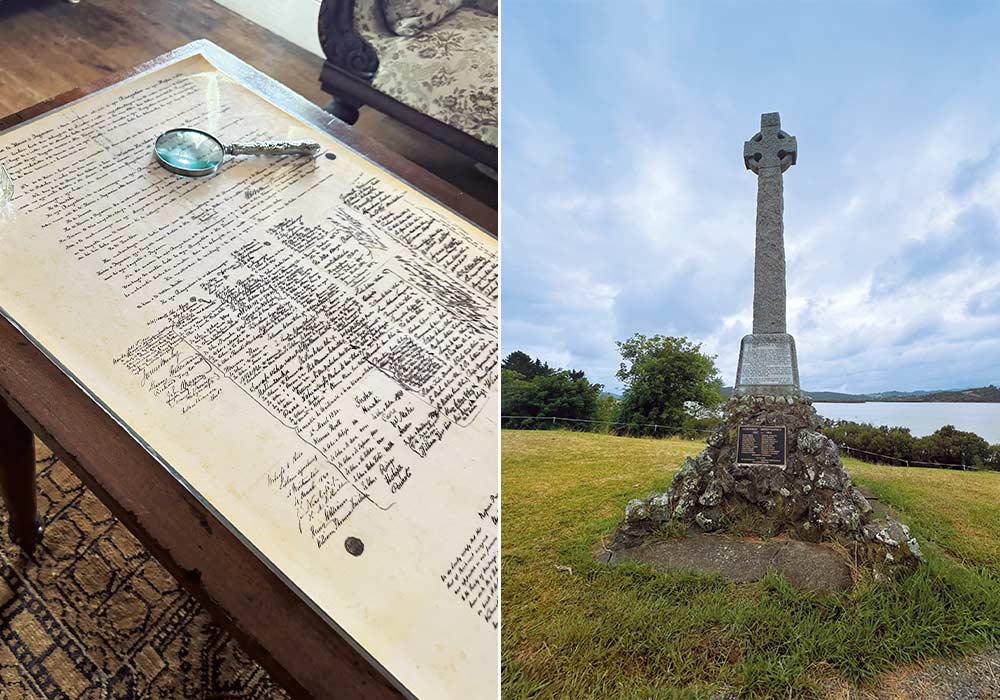
Right: The stone cross on the grounds of Māngungu Mission
Then in 1972, it was returned to its rightful place on one of the most stunning historical sites in the country. I sat on the veranda of the silent old building, which had been liberally decorated by local pigeons, and took in the remarkable view over the Hokianga Harbour. Down the hill, in the 1830’s graveyard, white butterflies were cavorting around the headstones like lost souls. Most of the tombs’ young occupants appeared to have died by drowning.
In the small timber chapel, a cheerful Ngāpuhi Māori, who’d lived in Horeke all his life, told me it had been shifted onto the site from elsewhere. As we left, he called out: “You fellas take care on those roads, eh?” He was probably referring to the Horeke-Taheke road, which twists like an eel through swamps and Kanuka forest to join the road to Opononi and Rawene.
Given the driving rain that had suddenly swept in from the harbour, we heeded his advice.
Far North must-dos
Kerikeri’s Old Packhouse Café: An add-on to the well-known weekend morning markets of the same name. The café is open every day from 6:30am. The food is made on-site, and it has a wide reputation for its cheese scones, pastries, and French breads. Get there early as they go fast.
Blue River Orchard: There’s a great treat to be had down a narrow farm road near Kerikeri where there’s a working blueberry farm that sells large ice creams packed with blueberries straight off the bushes. Open Wednesday to Sunday.
Hundertwasser Memorial Park: If you’re visiting Waimate North, check out the Hundertwasser Memorial Building in the centre of Kawakawa. It’s not as lavish as the Hundertwasser Art Centre in Whangārei but no less interesting. RVers can freedom camp overnight in the spacious park and parking area at the rear.
Kaleo Studio and Shop: If you’re interested in a spot of clothes shopping, check out this interesting Kerikeri boutique shop. Owner Christine Makaweo commissions talented artists from around New Zealand to come up with designs that reference New Zealand and the Pacific, then has them printed on fabric to create a unique range of clothing.
Russell Walk: From the township, there’s an excellent two-hour-long walkway, which follows the coast to Okiato through wetlands and native bush. Part of it is on a lengthy boardwalk walk at the water’s edge and there are four easy stages.
Rawene’s Boatshed Café: If you’re in need of sustenance, this café is a reasonable drive from Horeke. This long-standing and popular café jutting out into the water is still the best place to eat in the tiny Northland township. The food is renowned, particularly mussel pies.

